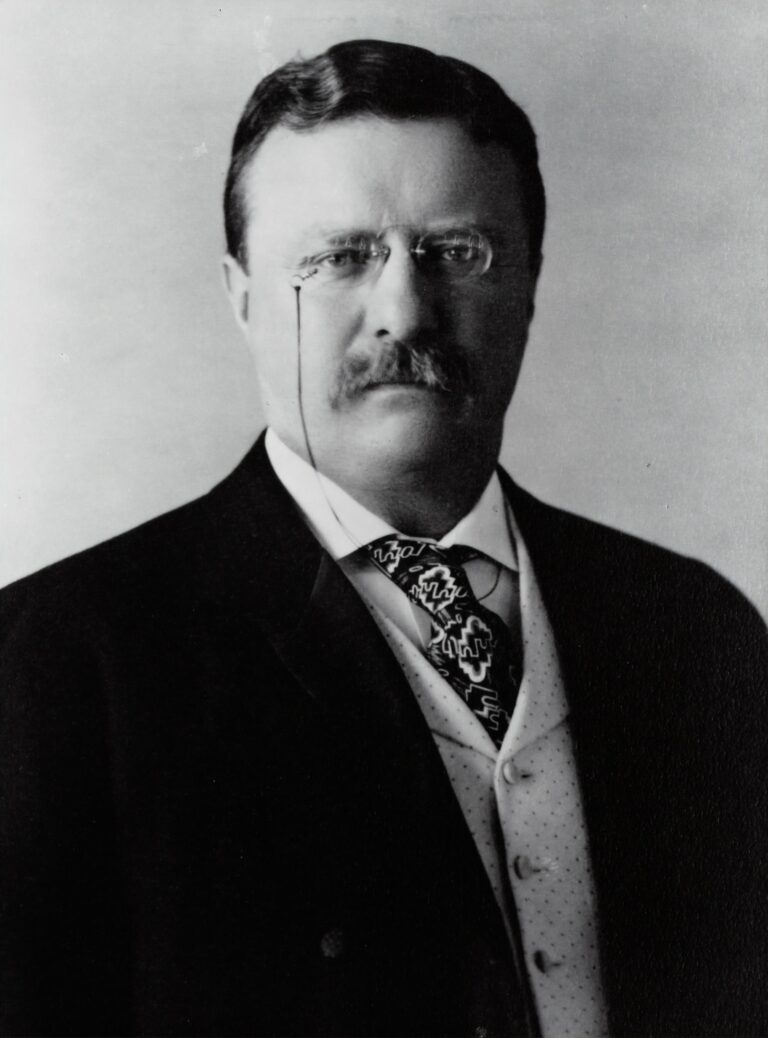Strategies for Developing a High-Performance Team Culture
Creating a High-Performance Team Culture: Strategies for Success
Definition of a High-Performance Team Culture
A high-performance team culture is a work environment where individuals work together towards a common goal, trust and respect each other, and continuously strive to improve their skills and performance. It is characterized by open communication, collaboration, and a sense of ownership and accountability among team members. A high-performance team culture not only leads to better performance and results, but also to increased employee satisfaction, engagement and retention.
Importance of Developing a High-Performance Team Culture
In today’s fast-paced and ever-changing business world, organizations need to constantly adapt and innovate to stay competitive. A high-performance team culture is crucial for achieving this, as it enables teams to work together effectively and efficiently, to identify and solve problems, and to continuously improve and adapt. In addition, a high-performance team culture can increase employee engagement, satisfaction and retention, which can lead to lower turnover rates, better recruitment, and improved overall productivity.
The purpose of this article is to provide strategies for developing a high-performance team culture within an organization. It will cover key topics such as defining the team’s vision and goals, building trust and communication, fostering collaboration and innovation, developing a growth mindset, and empowering and recognizing team members. By implementing these strategies, organizations can create a work environment that not only enhances performance and results, but also improves employee satisfaction and engagement.
It’s also important to mention that creating a high-performance team culture is not a one-time event, but a continuous process that requires consistent effort, dedication and adaptation to changes. This article will provide a solid foundation for teams and leaders to start building and fostering a high-performance team culture, but the real work will be on the team leaders, managers and employees to keep working on it.
Defining the Team’s Vision and Goals
Importance of Having a Clear Vision and Goals
Having a clear vision and goals is essential for any team to function effectively. A vision is a statement that defines the team’s purpose and direction, while goals are specific, measurable objectives that help the team achieve its vision. A clear vision and goals provide direction and focus for the team, allowing them to align their actions and efforts towards a common purpose. It also helps team members understand how their individual roles and contributions contribute to the larger picture.
How to Establish and Communicate the Vision and Goals
Establishing a clear vision and goals requires a collaborative effort between team members and leadership. Team leaders and managers can start by facilitating discussions and brainstorming sessions to gather input and ideas from team members. It’s also important to involve all team members in the process, as it helps to build ownership and buy-in for the vision and goals.
Once the vision and goals have been established, it is important to communicate them clearly and consistently to all team members. This includes providing regular updates and progress reports, as well as ensuring that the vision and goals are prominently displayed in the team’s workspace. Team leaders and managers should also lead by example and make sure that their actions and decisions align with the vision and goals.
Examples of Successful Teams with a Clear Vision and Goals
One example of a team with a clear vision and goals is the Apollo 11 mission team, which had a vision of landing a man on the Moon and returning him safely to Earth. Their specific goals included developing the necessary technology and equipment, training the astronauts, and successfully executing the mission. Through clear communication, collaboration, and a strong sense of purpose, the team was able to achieve this historic achievement.
Another example is the Google’s Project Oxygen, which aimed to improve the company’s management by identifying key attributes of successful managers and implementing them throughout the organization. The team established specific goals, such as increasing employee satisfaction and retention, and developed strategies to achieve these goals. Through clear communication and execution, the team was able to achieve significant improvements in management and employee satisfaction.
In both examples, the teams had a clear vision and goals that provided direction and focus, and this was key to their success.
Building Trust and Communication
Importance of Trust and Communication in a High-Performance Team Culture
Trust and communication are the foundations of any effective team. Without trust, team members may be reluctant to share ideas, express concerns, or take risks. Poor communication can lead to misunderstandings, confusion, and lack of alignment among team members. In contrast, a team culture built on trust and open communication promotes collaboration, creativity, and a sense of shared responsibility.
Building Trust Among Team Members
Trust is built over time through consistent and transparent actions and behaviors. Team leaders and managers can build trust by being consistent and reliable, being open and transparent in their communication, and showing respect and empathy towards team members. Encouraging team members to get to know each other on a personal level, through team-building activities or regular social events, can also help build trust among team members.
Encouraging Open Communication
Open communication can be fostered by creating an environment where team members feel comfortable speaking up, sharing ideas, and expressing their opinions. Team leaders and managers can do this by actively listening to team members, encouraging open and honest dialogue, and providing opportunities for team members to give feedback.
Regular team meetings, where team members can share information, discuss progress, and raise concerns, can also be an effective way to encourage open communication. Additionally, providing channels for team members to communicate with each other, such as a team chat or internal social media platform, can help to facilitate communication and build a sense of community among team members.
Examples of Teams with Strong Trust and Communication
One example of a team with strong trust and communication is the Navy SEALs. Trust and open communication are essential for their high-stakes and dynamic missions. They build trust through rigorous training and by ensuring that all team members understand each other’s strengths and weaknesses. Communication is emphasized through clear and concise language, and by actively seeking and providing feedback.
Another example is the IDEO design team, known for their innovative and human-centered design approach. They foster trust and communication by encouraging open and honest dialogue, actively listening to all team members, and providing opportunities for team members to give and receive feedback. They also use design thinking methods such as brainstorming, prototyping, and testing to build trust and open communication among team members.
In both examples, trust and communication are essential for their success, and it’s clear that a culture that fosters these values is vital for high-performance teams.
Empowering Team Members and Encouraging Innovation
Empowering Team Members
Empowering team members means giving them the autonomy, resources, and support they need to take ownership of their work and make decisions. This includes setting clear expectations, providing regular feedback, and recognizing and rewarding good performance. Empowering team members also means giving them the opportunity to develop their skills and advance their careers.
Empowering team members can lead to increased motivation, engagement, and a sense of ownership among team members. It also helps to foster a culture of innovation, as team members are encouraged to take risks, think creatively, and come up with new ideas.
Encouraging Innovation
Encouraging innovation means creating an environment where new ideas and approaches are welcomed and embraced. This can be done by promoting a culture of experimentation, encouraging team members to think outside the box, and providing resources and support for innovation.
One way to encourage innovation is through the use of design thinking methods. This approach, which is centered around understanding the needs and perspectives of users, can help teams to generate new ideas and solutions. Another way to encourage innovation is through hackathons or innovation challenges, where team members are given the opportunity to work on new ideas and projects outside of their regular responsibilities.
Examples of Teams that Empower Team Members and Encourage Innovation
One example of a team that empowers team members and encourages innovation is the team at Google X, the company’s innovation lab. The team is made up of engineers, designers, and researchers who are given the autonomy and resources to work on ambitious and cutting-edge technology projects. This approach has led to some of Google’s most successful products and innovations, such as Google Glass and Waymo self-driving cars.
Another example is the team at Zappos, an online shoe and clothing retailer known for its innovative culture. The company empowers its team members by giving them the autonomy to make decisions, and encourages innovation through its “Holacracy” management system, which is designed to promote decentralization and self-management. This approach has led to a culture of experimentation and innovation, resulting in new products and services, as well as improvements in customer service.
In both examples, the teams empower their team members and encourage innovation through autonomy, resources, and a culture that values experimentation and creativity.
Holding Team Members Accountable and Celebrating Success
Holding Team Members Accountable
Holding team members accountable means setting clear expectations and holding them responsible for meeting those expectations. This includes setting performance goals, providing regular feedback, and addressing any issues or concerns that arise. Holding team members accountable also means recognizing and rewarding good performance and addressing underperformance.
Holding team members accountable is an important aspect of creating a high-performance team culture. It helps to ensure that team members are working towards the same goals, and that everyone is doing their part to contribute to the team’s success. It also helps to foster a culture of accountability, where team members are responsible for their own actions and take ownership of their work.
Celebrating Success
Celebrating success means recognizing and rewarding team members for their hard work and accomplishments. This includes acknowledging individual and team achievements, recognizing milestones, and providing opportunities for team members to share their successes with others.
Celebrating success helps to build morale, motivation, and engagement among team members. It also helps to create a positive and rewarding work environment, where team members feel valued and appreciated.
Examples of Teams that Hold Team Members Accountable and Celebrate Success
One example of a team that holds team members accountable and celebrates success is the New England Patriots football team. The team sets clear performance goals and holds players responsible for meeting them. They also have a culture of accountability, where players are expected to take ownership of their actions and be responsible for their own performance. The team also celebrates success by recognizing and rewarding players for their achievements, both on and off the field.
Another example is the team at Patagonia, an outdoor clothing and gear company known for its commitment to sustainability. The company holds team members accountable by setting clear performance goals and regularly providing feedback. They also celebrate success by recognizing and rewarding team members for their achievements and contributions to the company’s mission. Additionally, the company regularly shares their success stories with the community to show their progress and impact.
In both examples, the teams hold their team members accountable by setting clear expectations and providing regular feedback, and celebrate success by recognizing and rewarding good performance. These practices help to create a culture of accountability and positivity which contributes to the teams high performance.
Continuously Improving and Adapting to Change
Continuously Improving
Continuously improving means regularly assessing the team’s performance and making changes and adjustments as needed. This includes setting performance goals, measuring progress, and identifying areas for improvement. It also means providing training and development opportunities for team members and implementing new processes or technologies to improve efficiency and productivity.
Continuously improving is an essential aspect of creating a high-performance team culture. It helps to ensure that the team is always working towards its goals, and that it is able to adapt and evolve as the business or industry changes. It also helps to foster a culture of learning and growth, where team members are encouraged to develop their skills and take on new challenges.
Adapting to Change
Adapting to change means being able to respond quickly and effectively to changes in the business or industry. This includes being open to new ideas and approaches, being flexible and willing to try new things, and being able to pivot quickly when necessary.
Adapting to change is important for maintaining a high-performance team culture. It helps to ensure that the team is able to stay relevant and competitive in a rapidly changing business environment. It also helps to foster a culture of innovation and agility, where team members are encouraged to think creatively and come up with new solutions.
Examples of Teams that Continuously Improve and Adapt to Change
One example of a team that continuously improves and adapts to change is the team at Amazon. The company is known for its focus on continuous improvement and its ability to adapt to change. Amazon’s culture is centered around experimentation, learning from failures, and making quick decisions. The company also provides its team members with opportunities for training and development and encourages them to take on new challenges.
Another example is the team at Netflix, which continuously improves and adapts to change by embracing a culture of experimentation and innovation. The company is known for its willingness to take risks and try new things, and for its ability to pivot quickly when necessary. Netflix also provides its team members with opportunities for training and development and encourages them to be creative and think outside the box.
In both examples, the teams continuously improve and adapt to change by embracing a culture of experimentation, innovation, and learning. They provide opportunities for team members to develop their skills, and encourages them to take on new challenges, also they are able to pivot and adapt to changes in the business environment, which helps to maintain their high-performance culture.
Recognition and Rewards
Recognition
Recognition is the act of acknowledging and praising the hard work and contributions of team members. It is a powerful tool for fostering a high-performance team culture, as it helps to build morale, motivate team members, and create a sense of pride and ownership in the team’s work. Recognition can take many forms, including verbal praise, bonuses, and awards.
Rewards
Rewards are tangible incentives given to team members for meeting or exceeding performance goals. They can be used to motivate team members and encourage them to put in their best effort. Rewards can take many forms, such as bonuses, stock options, promotions, and other forms of compensation.
The Importance of Recognition and Rewards
Recognition and rewards are important for creating a high-performance team culture for several reasons. They help to create a sense of motivation and engagement among team members, which leads to increased productivity and better performance. Additionally, they help to foster a sense of ownership and pride among team members, which leads to increased job satisfaction and engagement.
Balancing Recognition and Rewards
It is important to balance recognition and rewards in order to create a high-performance team culture. On the one hand, recognition and rewards are important for motivating team members and encouraging them to put in their best effort. On the other hand, if the focus is solely on rewards, it can lead to a culture of competition, where team members are more focused on competing with each other than on working together to achieve the team’s goals.
Examples of Recognition and Rewards Programs
One example of a recognition and rewards program is Google’s “Peer Bonus” program, where team members can nominate their peers for bonuses based on their contributions to the team. This program helps to foster a culture of teamwork, where team members are encouraged to recognize and reward their peers for their hard work and contributions.
Another example is Zappos’ “Wow Award” program, where team members can nominate their colleagues for awards based on their exceptional performance. This program helps to foster a culture of excellence, where team members are encouraged to strive for the highest level of performance.
In both examples, the recognition and rewards programs help to foster a culture of teamwork, excellence and recognition. It encourages team members to work together and acknowledge their peers for their hard work and contributions, which leads to increased motivation, engagement and productivity.
Continual Improvement
Importance of Continual Improvement
Creating a high-performance team culture requires a focus on continual improvement. This means that the team must be constantly working to improve processes, systems, and practices in order to achieve better results. Continual improvement is important for several reasons. It helps to ensure that the team is always working to achieve the best possible results and that the team is always learning and growing. Additionally, it helps to foster a culture of innovation and experimentation, which is important for staying competitive in today’s fast-paced business environment.
Identifying Areas for Improvement
One of the key steps in implementing a culture of continual improvement is identifying areas for improvement. This can be done by conducting regular performance reviews, gathering feedback from team members, and monitoring key performance indicators. Once areas for improvement have been identified, the team can then work together to develop and implement solutions.
Implementing Solutions
Implementing solutions for areas of improvement is an ongoing process. It requires the team to work together to develop and test new ideas and then to implement the best solutions. This process can be challenging, as it requires the team to be open to change and to be willing to take risks. However, it is essential for achieving better results and for fostering a culture of innovation and experimentation.
Measuring Progress
Measuring progress is an important part of the continual improvement process. It helps the team to track the success of their efforts and to identify areas where further improvement is needed. This can be done by monitoring key performance indicators and by conducting regular performance reviews.
Encouraging Innovation and Experimentation
Encouraging innovation and experimentation is an important part of fostering a culture of continual improvement. This means that the team must be open to new ideas and willing to take risks. It also means that the team must be willing to experiment with new approaches and to learn from their failures. Encouraging innovation and experimentation can be done by providing opportunities for team members to learn and grow, by recognizing and rewarding creative thinking and experimentation, and by creating an environment where failure is seen as a learning opportunity.
Examples of Continual Improvement
One example of a company that has successfully implemented a culture of continual improvement is Toyota. They have developed a system known as “kaizen” which is a process of continuous improvement that is used throughout the company. This process is centered around the idea of “small wins” where small, incremental improvements are made to processes and systems in order to achieve better results. By continuously making small improvements, Toyota has been able to achieve a culture of excellence and a reputation for producing high-quality vehicles.
Another example is the company W.L. Gore & Associates. They have a unique culture of experimentation, where employees are encouraged to experiment with new ideas and approaches. This has allowed the company to develop new products, such as Gore-Tex, which have become industry standards. This culture of experimentation has helped the company to achieve a reputation for innovation and to stay ahead of the competition.
In both examples, the companies have implemented a culture of Continual Improvement that encourages experimentation and learning from failure, which leads to improved performance and staying competitive.
Cultivating a Thriving Team Ecosystem for Lasting Success
In this article, we discussed strategies for developing a high-performance team culture. We emphasized the importance of clear communication, effective leadership, and a focus on results. We also highlighted the importance of building trust and fostering a sense of team cohesion, as well as promoting a culture of accountability and continual improvement.
The Importance of a High-Performance Team Culture
Developing a high-performance team culture is essential for achieving success in today’s fast-paced business environment. A high-performance team culture can lead to improved productivity, better quality work, and increased employee satisfaction. Additionally, it can help to foster a culture of innovation and experimentation, which is important for staying competitive in today’s rapidly changing business landscape.
The Role of Leadership
Leadership plays a critical role in developing a high-performance team culture. Effective leaders must be able to communicate clearly and inspire their team members to work together towards a common goal. They must also be able to build trust and foster a sense of team cohesion. Additionally, effective leaders must be able to promote a culture of accountability and continual improvement.
The Benefits of a High-Performance Team Culture
A high-performance team culture can lead to a number of benefits for both the team and the organization as a whole. These benefits include improved productivity, better quality work, and increased employee satisfaction. Additionally, a high-performance team culture can lead to a stronger sense of team cohesion, which can lead to improved morale and increased employee retention. Additionally, a high-performance team culture can lead to a culture of innovation and experimentation, which can help the organization stay competitive in today’s rapidly changing business landscape.
The Benefits of a High-Performance Team Culture: Improved Productivity and Employee Satisfaction
In conclusion, developing a high-performance team culture is essential for achieving success in today’s fast-paced business environment
By implementing clear communication, effective leadership, and a focus on results, leaders can foster a culture of trust, accountability, and continual improvement. This will not only lead to improved productivity and quality of work, but also increase employee satisfaction and retention. Additionally, a high-performance team culture will help organizations stay competitive and adapt to changes in the industry. As a leader, it is important to be proactive in developing and fostering a high-performance team culture, as the benefits to the team and organization as a whole are invaluable.






